Toxic Ingredients in Commercial Household Cleaning Products
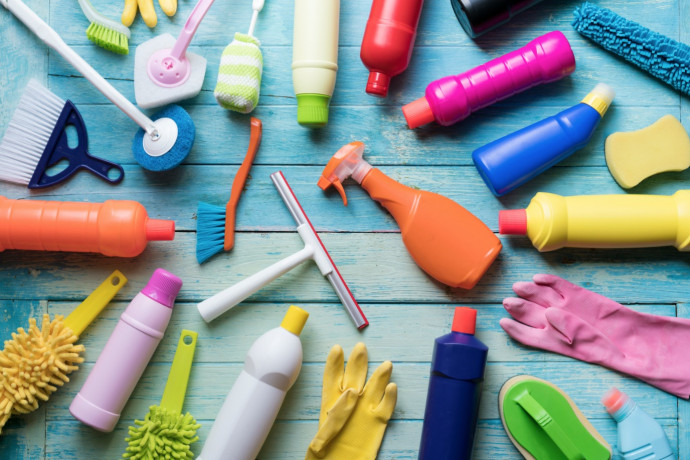
Many chemicals are used in commercial household cleaning products. Some of these can exacerbate conditions such as asthma; others may affect the skin if they come into contact with your hands or get splashed into your face, causing burns, rashes, irritation, or dryness. Some chemicals have an adverse effect on the environment by polluting waters and the air. Here are a few you may have heard of and should avoid.
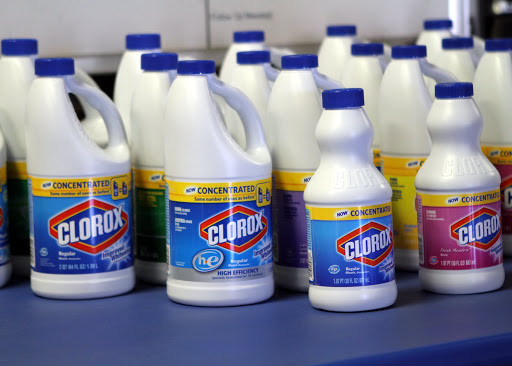
Chlorine
Which products contain chlorine?
Chlorine is found in some multipurpose cleaners, liquid bleaches, toilet bowl cleaners, disinfectants, and mold inhibitors. It is a general biocide.
Can chlorine harm me?
Chlorine irritates the eyes and lungs, can trigger asthma attacks, and aggravates respiratory ailments or heart conditions. It dries the mucous membranes and can burn the skin. If you accidentally splash it on dark clothing while working, chlorine bleach can take out the color in the fabric. The harmful effects are intensified when the fumes are heated, such as from chlorinated water in the bathroom when you run a bath or shower or when you open the dishwasher door and get a waft of steam that contains chlorine.
Does chlorine harm the environment?
The 1990 Clean Air Act lists chlorine as a hazardous air pollutant. It is argued that chlorine is a safe product in the environment as it breaks down into harmless salt and water. The real issue is that the by-products of chlorine (organochlorines and dioxin) do not break down readily and remain in the environment.
These products get dumped into our streams and waterways, causing polluted waters. As a result, the fish become contaminated, animals eat the fish, and humans eat the animals, creating a concoction of harmful chemicals in the food chain. It is believed that many of us ingest a daily amount of dioxin 300 to 600 times greater than the Environmental Protection Agency’s “safe dose.” When consumed, these chemicals accumulate in the fatty tissues, causing hormonal imbalances, diabetes, cancer, suppressed immune systems, endometriosis, reproductive disorders, and detrimental effects on fetal development in the womb.
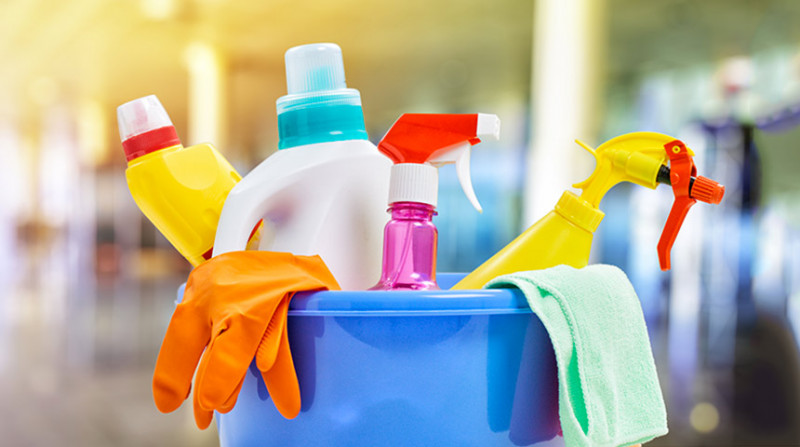
Detergents
Which products contain detergents?
Detergents are the main component of many household cleaners.You will find them in heavy-duty cleaning products that deal with food, grease, and oily residue, such as dishwashing and laundry products. Detergents contain other components such as surfactants, enzymes, acids, caustics, bleaching agents, and optical brighteners. These components all have their part to play in dislodging dirt and grease from surfaces and fabrics around your home.
Can detergents harm me?
The human body contains many sensitive mucous membranes located in the eyes, nose, mouth, and lungs. These require a delicate balance between water content and other bodily fluids such as sebum. If any of these mucous membranes comes into contact with detergents, this delicate balance can be disrupted. The moisture-retaining sebum is oily, and can be attacked by detergents because they are designed to dissolve oil. Once this happens, tissues can lose their natural elasticity and become easily torn or ruptured. You might notice that your skin is dry or irritated after using certain products, but for some people the outcome can be more serious and result in dermatitis or eczema. It is easy to protect your hands with gloves. However, many modern cleaning products come in spray bottles or require dilution in hot water. This leads to chemicals being sprayed in the air or being transmitted in hot, steamy fumes which can be inhaled into the lungs or reach the eyes and mucous membranes.
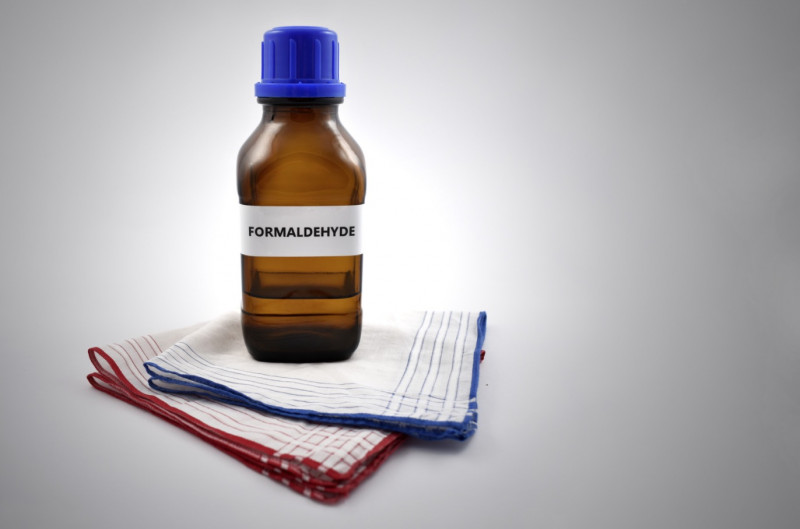
Formaldehyde
Which products contain formaldehyde?
Formaldehyde is used in a wide variety of products found in our homes. It’s a chemical used as a binder and preservative in literally hundreds of household products, including paper products like toilet rolls, sanitary napkins, tissues, and building materials. Additionally, formaldehyde is added as a disinfectant to some cleaners as it kills most bacteria and fungi.
Can formaldehyde harm me?
Formaldehyde resin is used in many construction materials which makes it one of the more common indoor air pollutants. It has been shown to irritate the eyes, throat, skin, and lungs, cause nausea, nosebleeds, insomnia, headaches, coughing, wheezing, and can trigger asthma attacks, lower immunity, and cause fatigue and skin rashes. Formaldehyde is classified as a probable human carcinogen. The International Agency for Research on Cancer (IARC) has determined that there is “sufficient evidence” that occupational exposure to formaldehyde causes nasopharyngeal cancer in humans (the upper part of the throat, behind the nose).This type of cancer spreads widely and produces few symptoms early, which means that most cases are quite advanced when detected.
Does formaldehyde harm the environment?
Formaldehyde is one of the large family of chemical compounds called volatile organic compounds (VOCs) which you’ll learn more about in the following chapters. Levels of formaldehyde emitted from products increase with temperature and humidity, so bear this in mind if you use a disinfectant or floor cleaner containing formaldehyde that you add to a bucket of hot water.
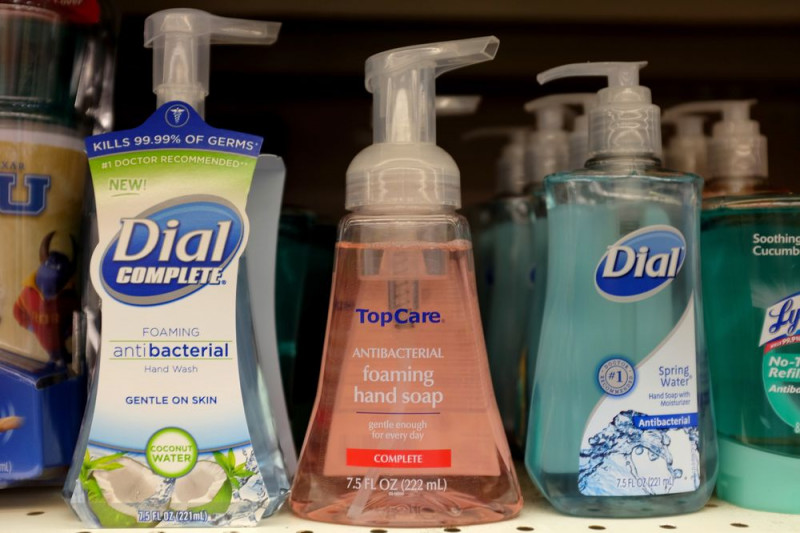
Triclosan
Which products contain triclosan?
Triclosan is one of the most widely used antibacterial and antifungal ingredients in household cleaners and personal-care products.You will find it in some hand- or dish-washing soaps and even impregnated into surfaces such as food storage boxes and “antibacterial” cutting boards.
Can triclosan harm me?
Once touted a “cure all” for germs and bacteria everywhere, there is now concern about the dangerous consequences of triclosan when it is absorbed through the skin and accumulates in the body. Triclosan has been found accumulated in fish tissue and human breast milk. One of the most devastating side effects of the overuse of antibacterial products is that resistant strains of bacteria are developing all the time. This means that bacteria that were once killed by triclosan have found ways to mutate and survive in much the same way as some “superbugs” are now resistant to antibiotics.
Volatile organic compounds (VOCs)
Which products contain VOCs?
Many liquid cleaners and household products contain organic solvents such as ethanol, methanol, isopropyl alcohol, propylene glycol, and glycol ethers. These solvents release volatile organic vapors into the air.
Can VOCs harm me?
Products that are sprayed from aerosol cans or pump sprays usually contain VOCs. Used in this way, VOCs become small particles that are easily inhaled and contribute to increased levels of ground-level ozone. These fumes can cause intoxication, drowsiness, breathing difficulties, asthma attacks, disorientation, and headaches. Long-term exposure to some organic solvents can damage the nervous system and may be carcinogenic. Many solvents can be skin and eye irritants; others produce vapors that can be flammable. «If you see the term “volatile” on a label, ventilating the area you are working in is crucial to reduce harmful inhalation. Volatile compounds also release vapors slowly while being stored, thus creating toxins in the air of your home on a constant basis.
How do I know there are VOCs in my home?
You can usually smell VOCs easily—artificial fragrances contain VOCs—and the strong scents that come from many products such as glass cleaners are VOCs escaping from the product into the air of your home. Ironically, it is often the smell of VOCs that we associate with a “fresh smell” in our homes. We feel certain that our homes are clean if they have this familiar scent. VOCs are also present in plug-ins and spray air fresheners.
Now that you are fully versed in the nasty chemicals that lurk in store-bought cleaning products, you’ll probably choose some safer alternatives.
